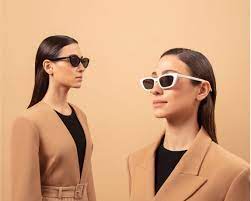
Admin, company.com
Contact lens wearers must be examined periodically by their eye doctors to make sure that the lenses fit properly and that there is no infection. Both infection and lenses that do not fit properly can damage the cornea. People can be allergic to certain solutions that are used to clean or lubricate lenses. For that reason, individuals should not randomly switch products unless they speak with their doctor. Contact lens wearers should seek immediate attention if they experience eye pain , a burning sensation, red eyes, intolerable sensitivity to light, cloudy vision, or an inability to keep the eyes open.
To avoid infection, it is important for contact lens wearers to exactly follow their instructions for lens insertion and removal, as well as cleaning. Soft contact lens wearers should never use tap water to rinse their lenses or to make-up solutions. All contact lens wearers should also always have a pair of glasses and a carrying case for their contacts with them, in case the contacts have to be removed due to eye irritation. Wearing contact lenses increases the risk of corneal damage and eye infections.
In the early 2000s eyeglass wearers can choose polycarbonate or polyurethane materials for their lenses. Polycarbonate is the most impact-resistant material available for eyewear, and polyurethane has exceptional optical qualities and an index of refraction of up to 1.66, much higher than the conventional plastics used for lenses and even higher than glass. Parents whose children have high prescriptions should ask about high-index material options for their lenses. Aspheric lenses are also useful for high prescriptions. They are flatter and lighter than conventional lenses.
There are many lenses and lens-coating options for individual needs, including coatings that block the ultraviolet (UV) light and/or blue light which have been found to be harmful to the eyes. Such coatings are not needed on polycarbonate lenses, which already have UV protection. UV coatings are particularly important on sunglasses and ski goggles. Sunglasses, when nonprescription, should be labeled with an indication that they block out 99 to 100 percent of both UV-A and UV-B rays.
There are anti-scratch coatings that increase the surface hardness of lenses (an important feature when using plastic lenses) and anti-reflective (AR) coatings that eliminate almost all glare and allow other people to see the eyes of the wearer. AR coatings may be particularly helpful to people who use computers or who drive at night. Mirror coatings that prevent other people from seeing the wearer's eyes are also available. There is a whole spectrum of tints, from light to dark, used in sunglasses. Tint, however, does not block-out UV rays, so a UV coating is needed. Polaroid lenses that block out much of the reflected light also allow better vision in sunny weather and are helpful for people who enjoy boating. Photosensitive (photochromatic) lenses that darken in the presence of bright light are handy for people who do not want to carry an extra set of glasses. Photochromatic lenses are available in glass and plastic.
FRAMES Frames can be made from metal or plastic, and they can be rimless. There is an almost unlimited variety of shapes, colors, and sizes. The type and degree of refractive correction in the lens determine to some extent the type of frame most suitable. Some lenses are too thick to fit in metal rims, and some large-correction prescriptions are best suited to frames with small-area lenses.
Share:Related articles

Shady Nights Apparel
Your appearance, personal taste and lifestyle provide the best guide to finding just the right eyeglasses for you.
View BlogFun In The Shades
D-Frames are known for bringing about a stylish look but Superstar spells an entirely new look for wayfarers- that of a snarky one.
View BlogLatest Blogs
Slaybeauty Eye Wears
Eyes are examined by optometrists (OD) or by ophthalmologists (MD or DO). Prescriptions, if necessary, are then given to patients for glasses. Eyeglasses are generally made by an optician.
View BlogSunglass Garden
You need to first brainstorm on the possible names for your business, to develop the best idea.
View BlogSoho Chic Sunglasses
It is a fact that our eyes need protection from harmful ultraviolet rays, glare, and reflection, especially when it comes to water sports, sports, and just to protect our eyes from the harmfu
View Blog50 Shades Of Style
Explore the world of sunglasses, reading glasses, computer glasses, sports eyewear, and more.
View BlogClassy Glasses
Children may sometimes need a few days to adjust to a new prescription. However, problems should be reported, because the glasses may need to be rechecked.
View Blog








